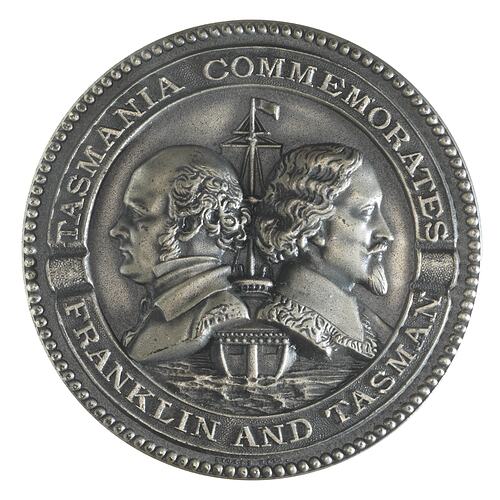Abel Janszoon Tasman was born in 1603 in the village of Lutjegast, in what is today Groningen, the Netherlands. Little is known of Tasman's early life, and no portraits of him exist. It is known, however, that from an early age ships and sailing were his interest and career. When Tasman married for a second time around 1631 following the death of his first wife, he described himself as an ordinary sailor.
In 1633 Tasman signed up with the Dutch East India Company (Verenigde Oostindische Compagnie or VOC). He was soon sent to the East on a three-year contract, and soon commanded several of the company's ships. He made several trips to the East Indies. Tasman returned to the Netherlands in 1637 and the following year left again for Batavia (now Djakarta, Indonesia) in command of the ship 'Engel', this time on a 10-year contract. His wife accompanied him. Batavia was a wealthy city, and the East India Company enjoyed a powerful position. Tasman undertook several more trips, sailing to Formosa, Japan, Cambodia and Palembang as merchant captain.
On 13 August 1642 he was instructed to find the supposedly rich but mysterious Southern Continent, which had eluded European explorers for centuries. 'Terra australis incognita' was said to stretch across the Pacific. Tasman's instructions were to take possession of all continents and islands 'discovered' in the course of his voyage 'on behalf of their High Mightinesses the States-General of the United Provinces'. His two vessels, the 'Heemskerk' with 60 men and the 'Zeehaan' with 50 men on board, first stopped at Mauritius, where they stayed for a month to repair the ships, then sailed south. They sighted Tasmania on 24 November 1642. Tasman named the island after the governor of East Indies, Antonio van Diemen, and first two mountains they sighted on the island Mount Zeehan and Mount Heemskirk, after his ships.
From here the ships sailed further east until they again sighted land on 13 December. They called the land Statenland - later changed to New Zealand. They received a hostile reception from the locals, who killed four crew members of the 'Zeehan'. The ships continued to the north along the west coast of Statenland to its northern-most point, which Tasman named Cape Maria van Diemen, after the Governor's wife. On 21 January they sailed into the Tonga Archipelago, where they received a warmer reception and were able to obtain fresh supplies. They named the two islands Amsterdam and Rotterdam. Tasman and his ships eventually returned to Batavia via the north of New Guinea on 15 June 1643.
The following year, in 1644, Tasman was sent out again with three ships, the 'Limmen', 'Zeemeeuw' and 'Brak', on an expedition along Australia's north coast. He explored and named the Gulf of Carpentaria, but failed to find Torres Strait. The expedition is not well documented.
Although East Indies governor van Diemen was not wholly impressed with Tasman's achievements, his contract was extended for three more years with increased salary. In a climate of worsening relations with the Spanish, Tasman left Batavia in 1648 with eight ships to attack the Spanish. The whole affair was something of a disaster, and Tasman was dismissed from the Company's service the following year, soon reinstated, but resigned from active service a year later, in 1651. He died in 1659, at the age of 56, apparently leaving 25 guilders to the poor of his village.
References:New Zealand in History website http://history-nz.org/discovery1.html, accessed 12/2/2004
Flinders Range Research website http://www.southaustralianhistory.com.au/tasman.htm, accessed 12/2/2004.
More Information
-
Keywords
-
Localities
Holland (The Netherlands), New Zealand, East Indies, Mauritius, Gulf of Carpentaria, Queensland, Australia
-
Authors
-
Article types


